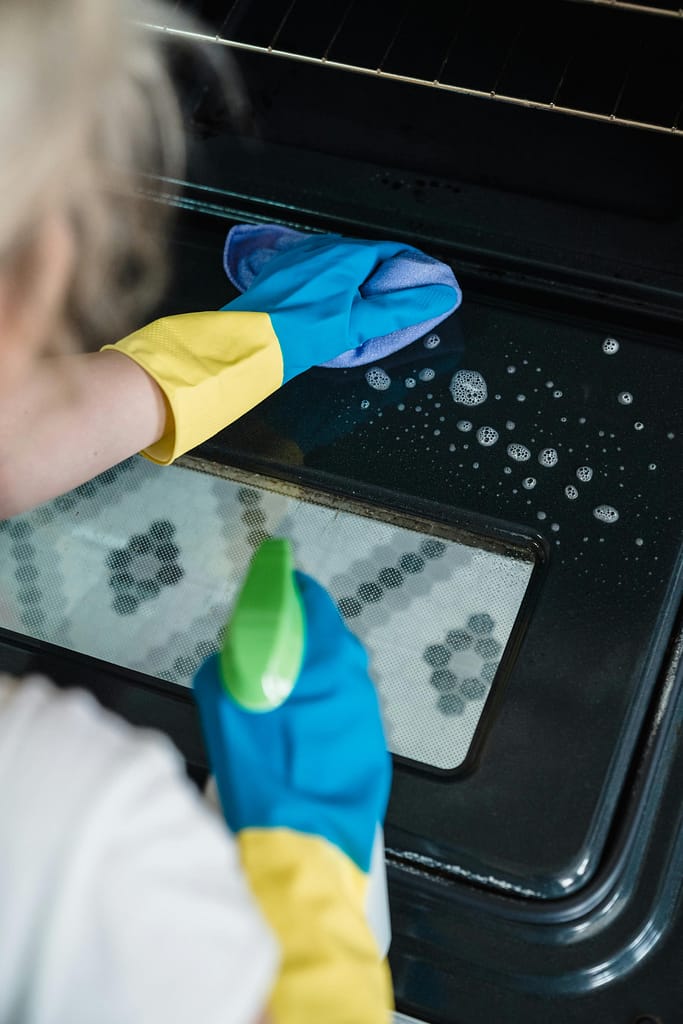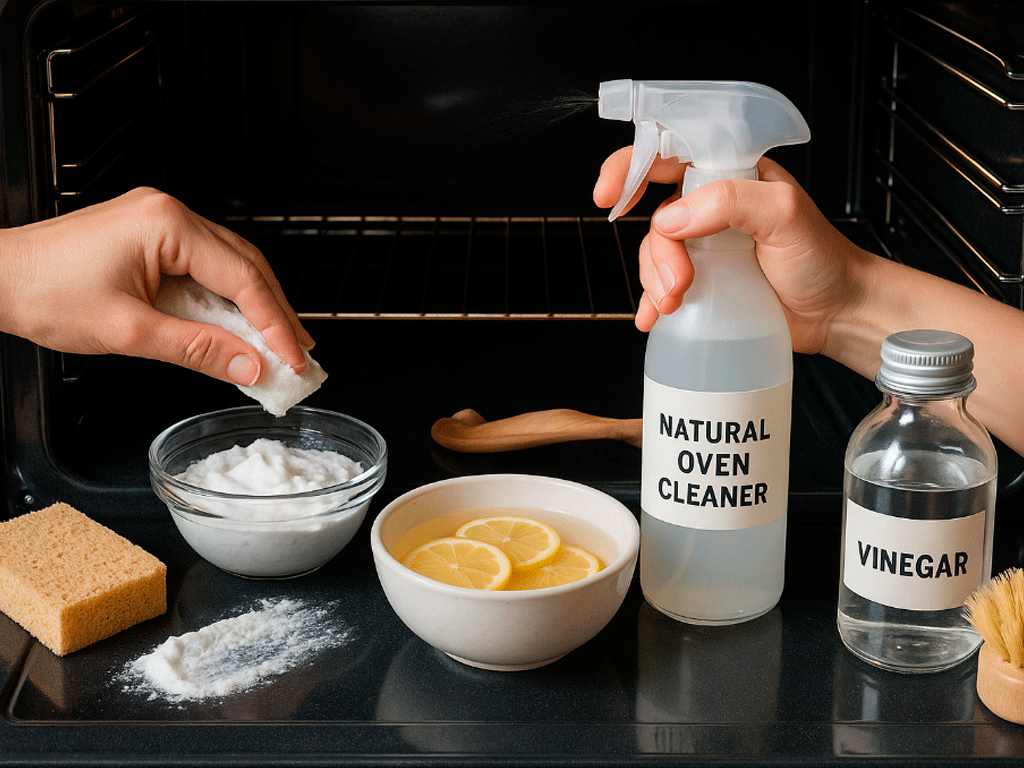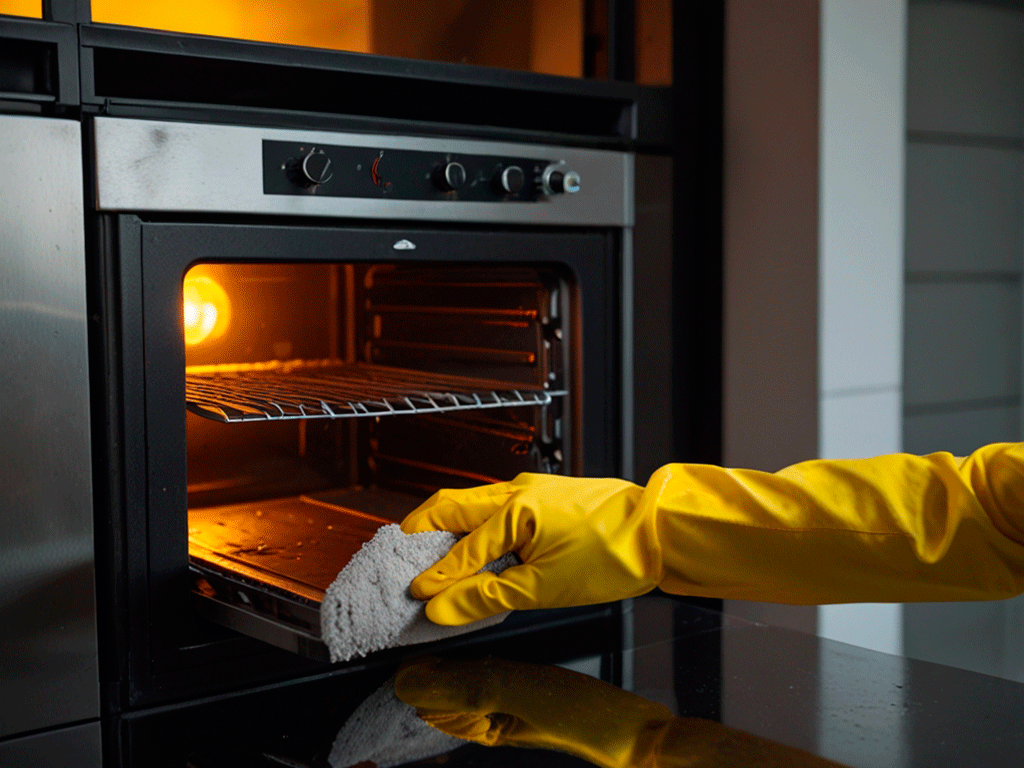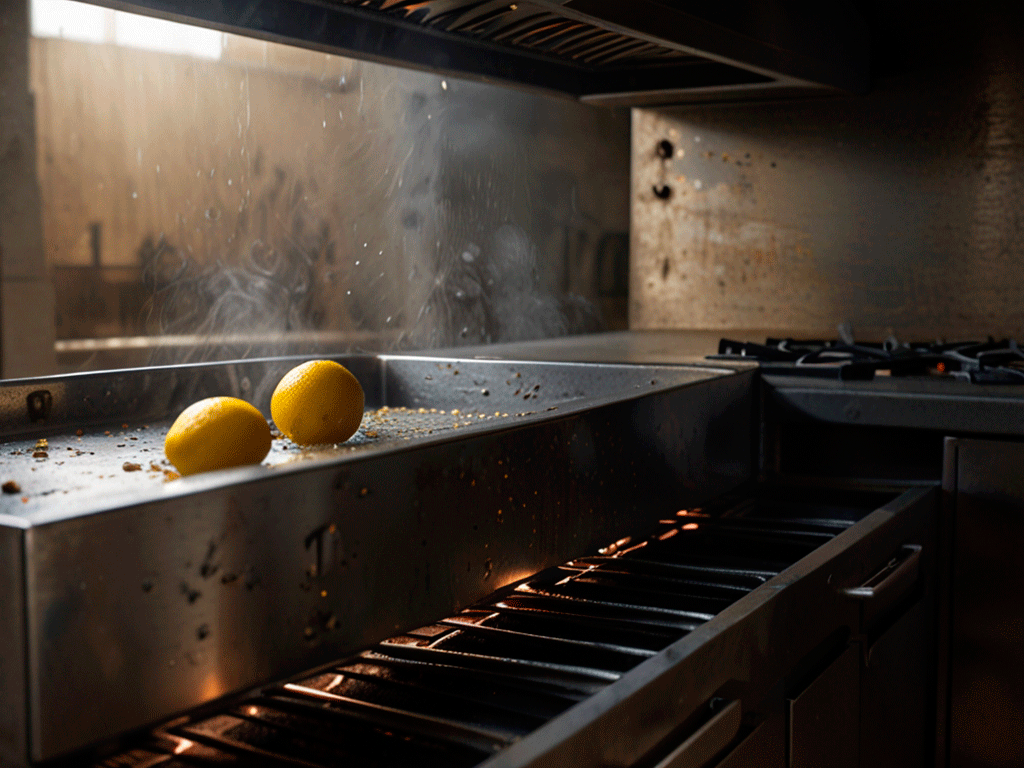Table of Contents
Keeping your oven clean is essential for maintaining a healthy kitchen and ensuring your meals come out tasting their best.
But cleaning your oven can seem like a daunting and time-consuming task. Luckily, with a few expert tips and techniques, you can easily get your oven sparkling and grease-free. In this article, we’ll share top tips from experts on how to effectively clean your oven and keep it looking like new. Say goodbye to stubborn grease and hello to a sparkling oven with these expert cleaning techniques.
Remove Loose Debris First
Cleaning your oven is an essential part of maintaining a clean and functional kitchen.
One of the crucial first steps in the oven cleaning process is to remove any loose debris. Before you begin, make sure to gather the necessary supplies such as a damp cloth, a bowl of warm soapy water, and a vacuum or hand-held brush for any crumbs or leftover food particles.
Start by carefully taking out the oven racks and any other removable components.
Then, using your damp cloth or a specially designed vacuum for cleaning, remove any loose crumbs and debris from the bottom of the oven cavity. It’s important to do this step thoroughly to ensure that the cleaning process is as effective as possible and to avoid any debris being burnt in the process.

Once you have cleared out the loose debris, give some attention to the oven door. For this, you can use a simple solution of warm soapy water and a microfiber cloth to wipe down the exterior of the oven door.
Make sure to be thorough in this step and pay attention to any areas with accumulated grease or stains. By preparing your oven in this way, you’ll set the stage for a more seamless and efficient cleaning process, ensuring that no debris or grime hinders the cleaning steps to follow.
Use Steam to Loosen Grease
After removing the loose debris, a highly effective technique for loosening stubborn grease and grime is to use the power of steam.
One way to do this is by placing a heat-safe bowl of water with lemon slices in your oven.
The steaming action created by the water and the natural degreasing properties of the lemon will work to soften and loosen the accumulated grease and any tough stains. The steam will also help to freshen the interior of the oven. Close the oven door and heat it slightly, ensuring the temperature is set to a safe and manageable level.
This steaming process typically takes about 30 minutes and is a prelude to the actual cleaning. It sets the stage for easier removal of the built-up grease and grime, making the subsequent cleaning steps more manageable and effective.
After the steaming process, the next step is to wipe down the interior of the oven with a damp cloth.
This will help to remove any loosened debris and prepare the surface for the application of the cleaning solution. By using steam to tackle the more challenging aspects of oven grime, you can significantly reduce the amount of physical scrubbing required, saving time and effort in the overall cleaning process.
Choose the Right Cleaner
When it comes to cleaning your oven, the choice of cleaner can make a significant difference in the effectiveness of the cleaning process.
There are various options available, ranging from commercial oven cleaners to homemade solutions.
It’s important to choose a cleaner that is specifically designed for the tough job of breaking down oven grease and grime. Bio oven cleaners, for example, are a popular choice as they are less harsh on the material of the oven and are often more environmentally friendly. When selecting a cleaner, it’s essential to read the manufacturer’s guidelines and ensure that it is safe to use in your particular type of oven.
Some individuals may prefer to opt for homemade cleaners, with common ingredients including baking soda, vinegar, and dish soap.

These natural alternatives can be effective in breaking down grease and may be a more appealing option for those looking to minimize exposure to harsh chemicals.
No matter the choice of cleaner, it’s important to follow the instructions carefully and, if possible, to conduct a patch test on a small, inconspicuous area of the oven. This will help to ensure that the chosen cleaner is compatible and effective without risking damage to the oven’s interior surface.
Clean Oven Racks Separately

Your oven racks are an essential part of your oven, and they also require thorough cleaning to ensure that your oven is in top condition.
To clean the oven racks, it’s recommended to remove them from the oven and soak them in a cleaning solution. This can be a simple solution of warm soapy water, or, for tough stains, a specialized oven rack cleaner.
Let the racks soak for a sufficient amount of time to allow the cleaning solution to work on loosening any tough grease or baked-on residue.
After the soaking period, use a soft scrub brush or a microfiber cloth to gently scrub the racks, focusing on any areas with stubborn stains.
Once the racks are clean, rinse them thoroughly and let them dry before placing them back in the oven. By cleaning the oven racks separately, you can ensure that they are thoroughly attended to and that no dirt or residue is transferred back into the oven during the cleaning process. This step is essential for the maintenance of both the oven’s hygiene and the condition of the racks themselves.
Soak in Cleaner
Soaking the oven racks in a cleaning solution is a proactive and effective approach to tackling the stubborn grime and grease that often accumulates on these components.
The soak allows the cleaning solution to penetrate and break down the tough residue, making it easier to clean off with gentle scrubbing.
It’s an efficient way to ensure that the oven racks are left sparkling clean and free from any lingering built-up residue. By giving the cleaning solution time to work, you can significantly reduce the amount of effort and time required to achieve a pristine result, making the overall oven cleaning process more streamlined and effective.
Scrub the Oven Cavity
After preparing and soaking the various components of the oven, the next crucial step is to turn your attention to the oven cavity itself.
This is typically where the most significant accumulation of grease and food residue is found. In this stage, it’s important to have the appropriate cleaning tools on hand, such as a non-abrasive scrub brush or sponge, and the chosen cleaning solution.
Apply the solution to the interior surfaces of the oven, focusing on any particularly soiled areas. The cleaning solution should be allowed to sit for a specified period to effectively break down the stubborn grease and grime.

Once the solution has had time to work, use your scrub brush or sponge to gently scrub the interior surfaces of the oven.
Pay close attention to areas with tough stains or the build-up of residue. In the process, you may need to reapply the cleaning solution to certain areas to ensure a thorough and effective clean.
After the scrubbing, the interior of the oven should be left looking free from any stubborn stains and deposits, creating a clean and hygienic cooking environment. This stage of the cleaning process is vital in ensuring that the oven cavity is left in excellent condition, ready for the efficient and safe preparation of your favorite meals.
Don’t Forget the Oven Door
While focusing on the interior of the oven, it’s important not to overlook the thorough cleaning of the oven door.
The exterior of the door, in particular, is prone to marks and grease, making it a key area to address during the cleaning process. To clean the oven door, use a gentle yet effective cleaning solution suitable for the surface, whether it’s a commercial cleaner or a homemade, natural solution. Apply the chosen cleaner to the door, focusing on any areas with accumulated grease or streaks. Let the cleaner sit for the specified time, allowing it to penetrate and break down the residue.
Afterward, use a soft cloth or sponge to wipe down the door, ensuring that all cleaning solution and residue are thoroughly removed. For the interior of the door, including the glass panel, a specialized glass or degreasing cleaner can be used to achieve a streak-free and sparkling finish.
By paying attention to the cleaning of the oven door, you can not only ensure a pristine and hygienic cooking environment but also maintain the overall appearance of your kitchen appliances, setting the stage for both functionality and visual appeal.
Use Eco-Friendly Cleaners
As part of an increasingly eco-conscious approach to household maintenance, many individuals are seeking out and opting for eco-friendly cleaners for their oven cleaning needs. Eco-friendly cleaners are known for being less harmful to both the environment and the individuals using them, thanks to the reduced presence of harsh chemicals and toxins. Using these types of cleaners can contribute to a healthier indoor air quality and a more sustainable approach to home cleaning.
When considering eco-friendly options for oven cleaning, it’s worth exploring products that feature natural, biodegradable ingredients and are packaged in environmentally responsible and recyclable materials. Some popular choices for eco-friendly oven cleaning include citrus-based cleaners and vinegar-based solutions. These natural alternatives are not only effective in breaking down tough oven grime but also offer the added benefit of bringing a fresh, natural scent to your kitchen cleaning routine. By making the switch to eco-friendly cleaners, you can actively contribute to a cleaner and more sustainable home environment for you and your family.
Citrus and Vinegar Options
Among the various eco-friendly options for oven cleaning, citrus-based and vinegar-based solutions are highly sought after for their natural degreasing properties and effective results.
Citrus-based cleaners, often featuring the natural oils and acids found in citrus fruits, are known for their ability to cut through tough grease and leave a fresh, pleasant scent in their wake.
These cleaners can be particularly effective in the removal of stubborn oven stains and residues, making them a popular choice for those looking to combine cleaning efficacy with a natural approach.

Similarly, vinegar, and its acidic nature, is renowned for its ability to break down stubborn grease and food residue, making it a powerful and versatile cleaning agent.
When used in oven cleaning, vinegar can help to tackle tough stains, remove lingering odors, and leave the oven interior looking and smelling fresh. Whether used alone or in combination with other natural ingredients, the use of vinegar in oven cleaning represents a time-tested and eco-friendly approach to maintaining a clean and hygienic kitchen environment.
Conclusion
In conclusion, cleaning your oven can be a daunting task, but with these top tips and expert techniques, it can be a much more manageable and effective process.
Remember to remove loose debris, use steam to loosen grease, choose the right cleaner, and don’t forget to clean the oven racks and door. Consider using eco-friendly options for a more environmentally-friendly approach. With proper maintenance and regular cleaning, your oven will remain in top condition for all your cooking needs.
